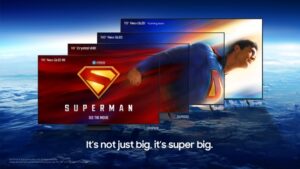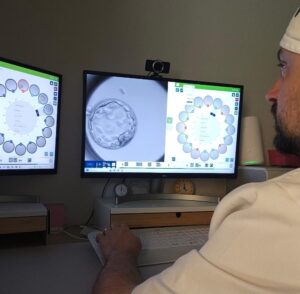The NASA has shown the press this Tuesday the facilities of the Kennedy Space Center (KSC) in Cape Canaveral (Florida, USA), intended for the spacecraft of the Artemis program, which aims to return to the Moon and then explore Mars with the cooperation of other countries and private companies.
In 2024, the four members of the Artemis II mission will orbit the Moon, and from 2025 it is planned to land. “This is real, not a dream,” said Artemis II commander Reid Wiseman, pointing to the Orion spacecraft, aboard which he will travel with three other companions: African-American pilot Victor Glover, mission specialist Christina Hammock Koch – the first woman to fly beyond low Earth orbit – and Canadian specialist Jeremy Hansen.
At the end of 2025, the launch of the Artemis III mission is planned, which will land with a crew on our satellite, followed by a fourth mission. The Orion spacecraft for these missions, along with the European Service Module built by the European company Airbus, are housed in the same industrial building at KSC.
Pam Melroy, NASA’s Deputy Administrator, highlighted the importance of international cooperation in the Artemis program, with 28 signatories, stating that they will set precedents and standards of behavior for humans in the solar system. For his part, NASA Administrator Bill Nelson expressed his excitement for the historic Artemis II mission to lunar orbit, the first crewed mission to the satellite in over 50 years. “We are returning to learn how to live in a deep space environment for long periods of time,” he commented.
Nelson added that, after over 50 years, we will return to a different Moon and come back safely. If the Artemis II mission is successful, the Artemis III mission will land at the moon’s south pole. In this context of returning to the Moon and creating permanent bases on its surface, Nelson acknowledged that the USA is in a “space race with China” to arrive first. “I don’t want China to arrive first at the south pole (of the Moon) and say, ‘It’s ours. Get out.’ We want to make sure it is available to everyone and protect the interests of the international community,” he emphasized.
Nelson also recalled the words of John F. Kennedy and his commitment to space exploration and the journey to the Moon: “He told us to go to the Moon, not because it is easy, but because it is difficult. And space is difficult. It is overcoming this harsh environment that will fill us as explorers.” “That’s why we are going back to the Moon and then traveling to Mars,” he asserted.
Commander Wiseman agreed in pointing out that the measure of success of Artemis II is being able to see his colleagues on the lunar surface and the people who will follow in their footsteps walking on Mars and returning to Earth.
Referrer: MiMub in Spanish












